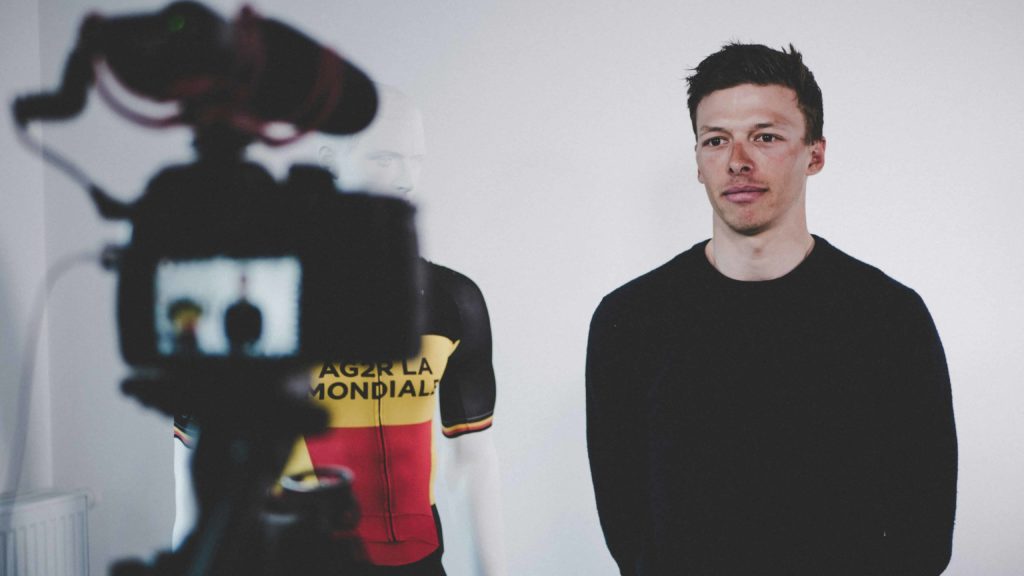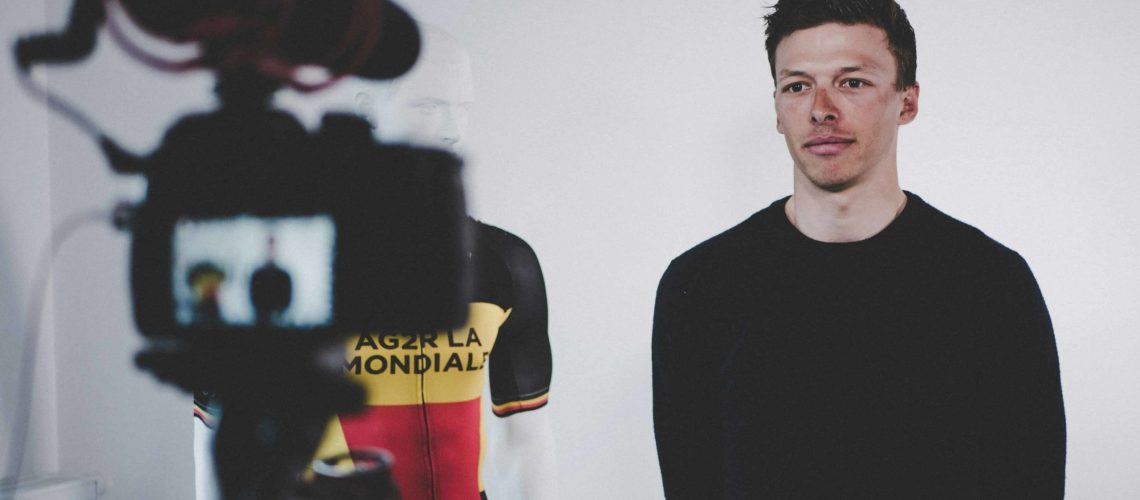You don’t have to be Oprah Winfrey to give a good corporate interview! In this article concocted by Solid Rusk, you’ll find all the information you need to know about how to conduct a good corporate interview. From the questions to ask in pre-production through to filming, we give you shot ideas, tips and the basic rules ofvideo interviewing. Quiet, we’re rolling! 🎬
Sommaire
Questions to ask in pre-production
As you’re beginning to know, Solid Rusk makes it a point of honor to prepare as many things as possible in pre-production. Filming is like a sporting event: the secret to success is PRE-PA-RA-TION.
Step 1: Find the location
Where will you conduct the video interview?
It’s important to choose a well-lit location. Preferably good quality natural light, or controlled lighting. Good lighting will enhance the subject of your interview and give it a more natural tone. Sound quality is just as important: choose a quiet location, free from noise pollution such as echoes, background noises, ambient hubbub, the constant passage of people, and so on. A carefully chosen setting not only enhances the aesthetics of your video, but also guarantees a better auditory experience for your viewers. So, of course, unless you want to capture the soundscape of a location, you’d better avoid recording a video interview in a station concourse or next to a school playground!
Step 2: How will the interviewee be seated?
Determining the interviewee’s posture, sitting or standing, is essential in defining the interview atmosphere and the positioning of the material – I generally prefer standing, as it gives a more dynamic feel – This choice must be made in accordance with the desired tone and style. For example, a seated position may be perceived as more formal and conducive to in-depth conversation, while a standing position may energize the exchange. The decision to capture the interviewee’s gaze towards the camera or away from it adds a personal dimension, influencing viewer engagement.
Is the video intended to be shared on social networks? Planning a vertical version of the interview will therefore be crucial, and will require some thought about framing: a tight shot for intimate communication, or a wide shot to contextualize the environment.
Step 3: How many cameras do I need?
Choosing the right number of cameras for a corporate interview is crucial to the quality of the final result. Using a single camera can simplify production, but limits angles of view and can make editing more rigid. Conversely, using several cameras allows different angles to be captured simultaneously, offering greater visual richness and editing flexibility. This facilitates the integration of cutaways, improves interview dynamics and enriches the viewer’s visual experience.
It is therefore essential to assess the purpose of the interview and the resources available to determine the optimum number of cameras.
Step 4: Do I need artificial lights?
The use of artificial light in a corporate interview is often essential to guarantee professional image quality. Natural light, while preferable for its softness and authenticity, can be unpredictable and insufficient, especially in indoor environments or when shooting at the end of the day. Artificial lights allow precise control of lighting, avoiding unwanted shadows on the interviewee’s face and enhancing the desired mood.
How do you define questions for a video interview?
Writing the questions for a video interview is a crucial step that requires close collaboration with the client or interviewee. This preparation ensures that the content is relevant and engaging for the audience. It’s also important to decide how the questions will be presented to the audience. There are three options:
- Let the interviewer hear the question, which creates a more natural dialogue;
- Display the question with a visual card (cool titling) between the answers for a clear, structured visual effect;
- There are no questions, and the subject responds directly by mentioning the question, such as “What I liked best about this program is…”.
La petite def’ 📖:
A cardboard box, inherited from silent cinema, is inserted between two shots to comment on or explain the situation. The opening and closing credits are made up of cards embedded in an image or on a neutral background (usually black) listing the artistic and technical cast.
Who is the interviewer?
If the question is not at all heard or seen by the audience, it is imperative that the interviewee rephrases the question in his or her answer.
This method not only clarifies the context for the audience, but also makes the interview fluid and coherent, even in the absence of a direct exchange between interviewer and interviewee.
When conducting a video interview, the interviewee can also benefit from the presence of a “mirror” person or the use of a prompter, depending on the context and specific needs. A mirror person reproduces the interviewee’s expressions and attitudes, which can help create a more relaxed and natural environment. This approach is particularly useful for interviewees less at ease in front of the camera, as it establishes a sense of dialogue rather than monologue.
Little tips 💡:
Send the questions to the person beforehand so that they can think about their answers and avoid the surprise effect or having incomplete answers because caught on the spot. When it comes to lighter models, like Brut or Konbini, on the other hand, the aim is to get surprising answers.
How to frame your video interview like a docu' on Netflix?
To be sure of great framing, it’s essential to master the rule of thirds, a fundamental visual composition technique.
This method involves dividing the image into three equal horizontal and vertical lines, creating nine segments. When the interviewee is not looking directly at the camera, his or her gaze should be at the intersection of these lines, often referred to as the “sweet spot”. Positioning the interviewee in this way creates a balanced, aesthetically pleasing composition. This approach naturally guides the viewer’s gaze towards the subject, reinforcing the visual and emotional impact of the interview.
How long does it take to produce a video interview?
Conducting a video interview requires more than simply keeping to the time allotted; it also requires careful preparation to put the interviewee at ease. Start the conversation before you start recording, using ice breakers while you set up the microphone and ties, for example. This can greatly help to relax the interviewee. It’s crucial to reassure the interviewee that to err is human, and that retakes are possible until he or she is fully satisfied.
For an interview of three to four questions, allow a minimum of 20 to 30 minutes. This time not only allows you to capture the essential answers, but also to give the interviewee the pauses he or she needs to reflect and respond as best he or she can. This patient and understanding approach guarantees superior content quality, reflecting a professional and empathetic production.

Article written by Emeline l Prête-moi ta plume
